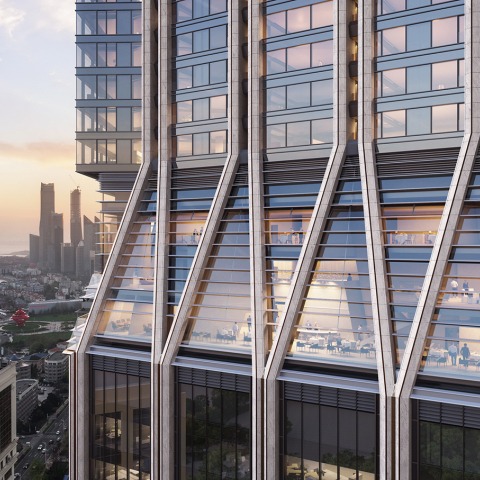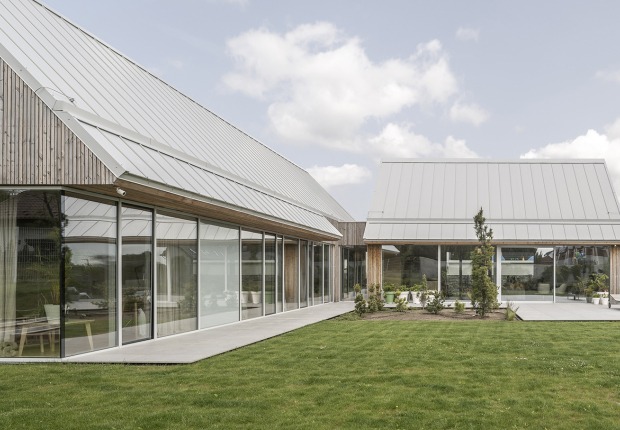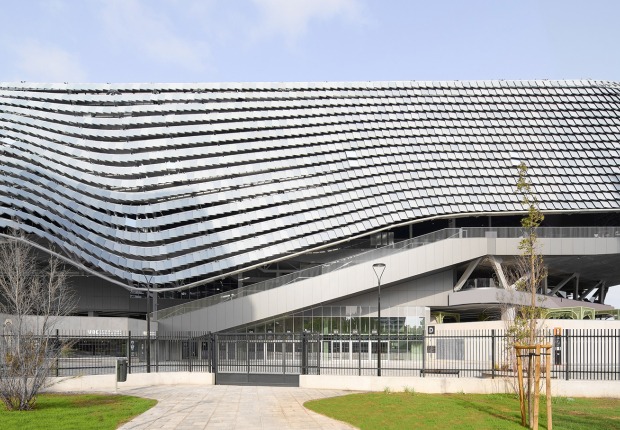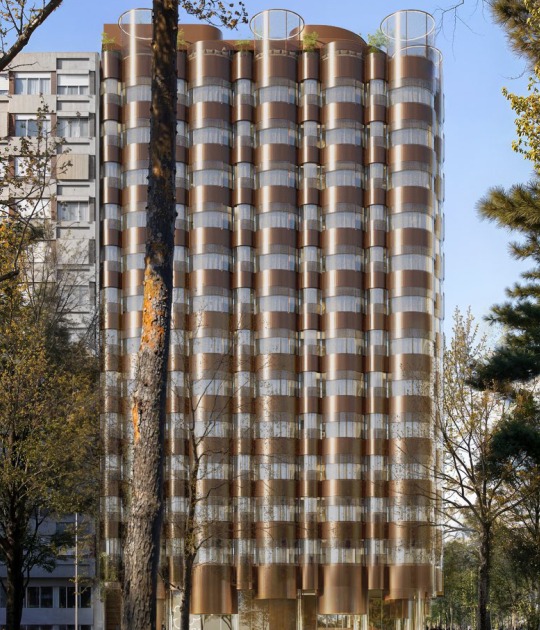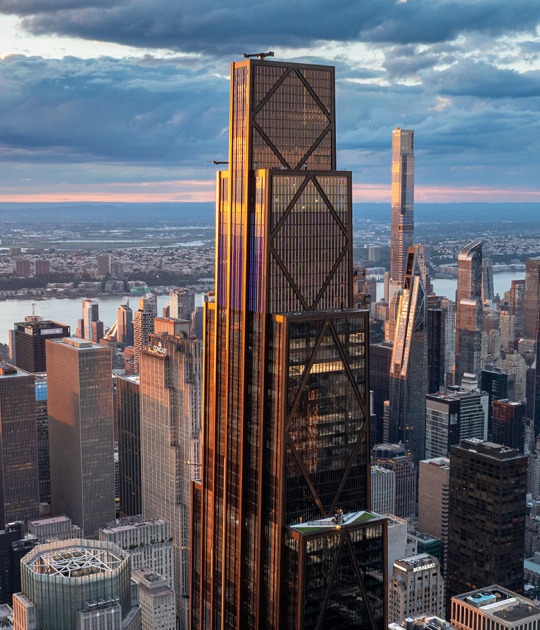A new shopping destination in Qingdao inspired by local rock formations is created at the base of the tower. The offices with impressive views are generated on two levels of low and high areas, which on the south side are arranged in double height to improve the space. Above the offices, three floors are created for the clubhouse, which offers different facilities for relaxation and events, an infinity pool, etc. The floors above the clubhouse house are 105 luxury apartments with cantilevered terraces and fully glazed corners.
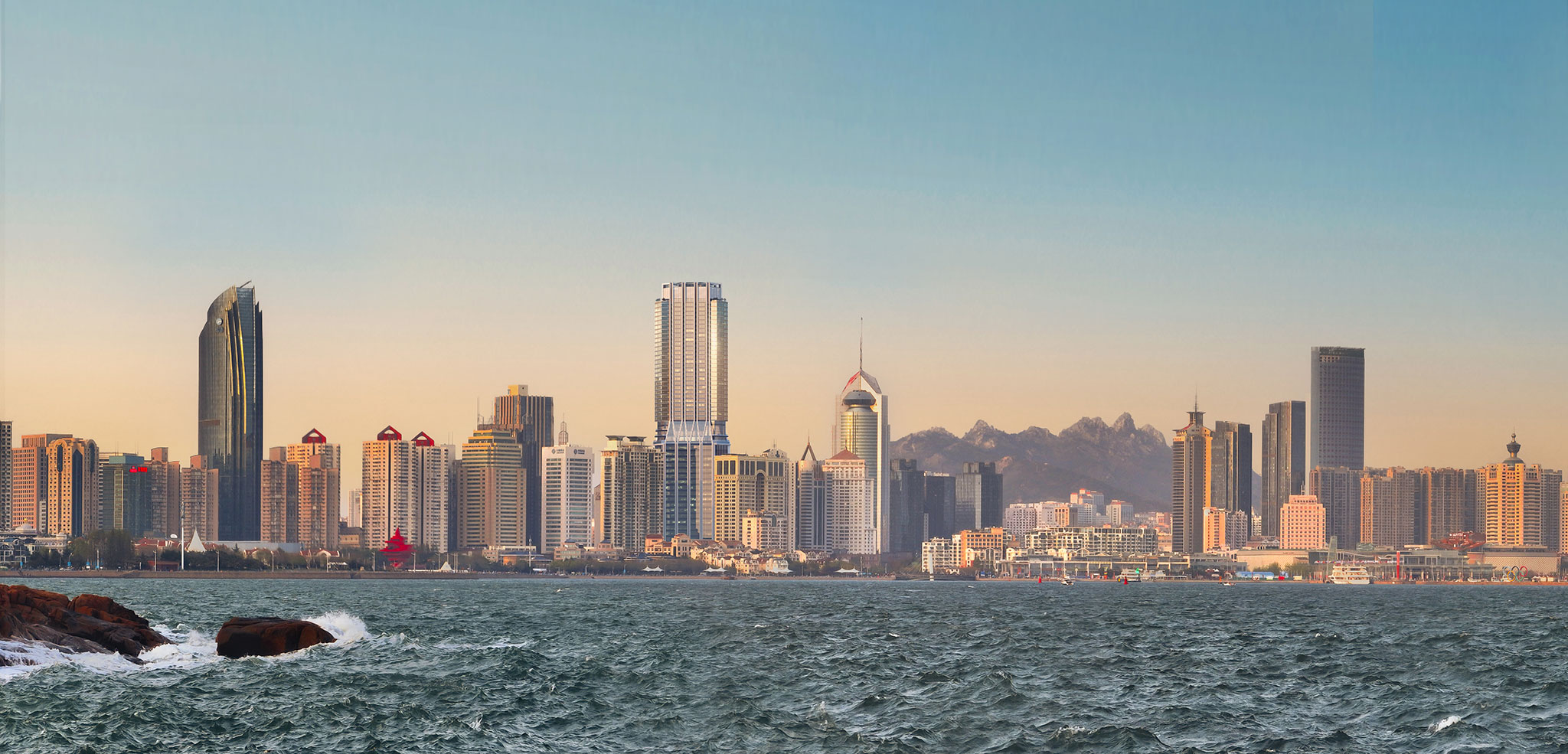
1 Nanjing Road by Norman Foster + Partners. Photomontage by Norman Foster + Partners.
Project description by Foster and Partners
1 Nanjing Road is Foster + Partners' first project in Qingdao, a major seaport and financial center in the eastern Shandong Province of China. Located in the city’s southern district, the mixed-use development is carefully stitched into the urban fabric and acts as a catalyst for renewal. The project aspires to three-star green building certification, LEED V4 and WELL V2.
“We are delighted to be working on the practice’s first project in Qingdao. Our tower on Nanjing Road contains high-quality office space, a three-story clubhouse, and luxury apartments on the upper levels. At its base, a retail podium, landscaped garden, and art gallery create a vibrant pedestrianized public realm and a new thoroughfare to the sea.”
Gerard Evenden, Head of Studio.
“The tower’s distinctive form responds to its scenic waterfront context, with a triangular plan that maximizes views out to sea for office workers and residents. Across the development, the use of local Shandong stone reflects the area’s natural beauty and complements the city’s material palette.”
John Blythe, Senior Partner.
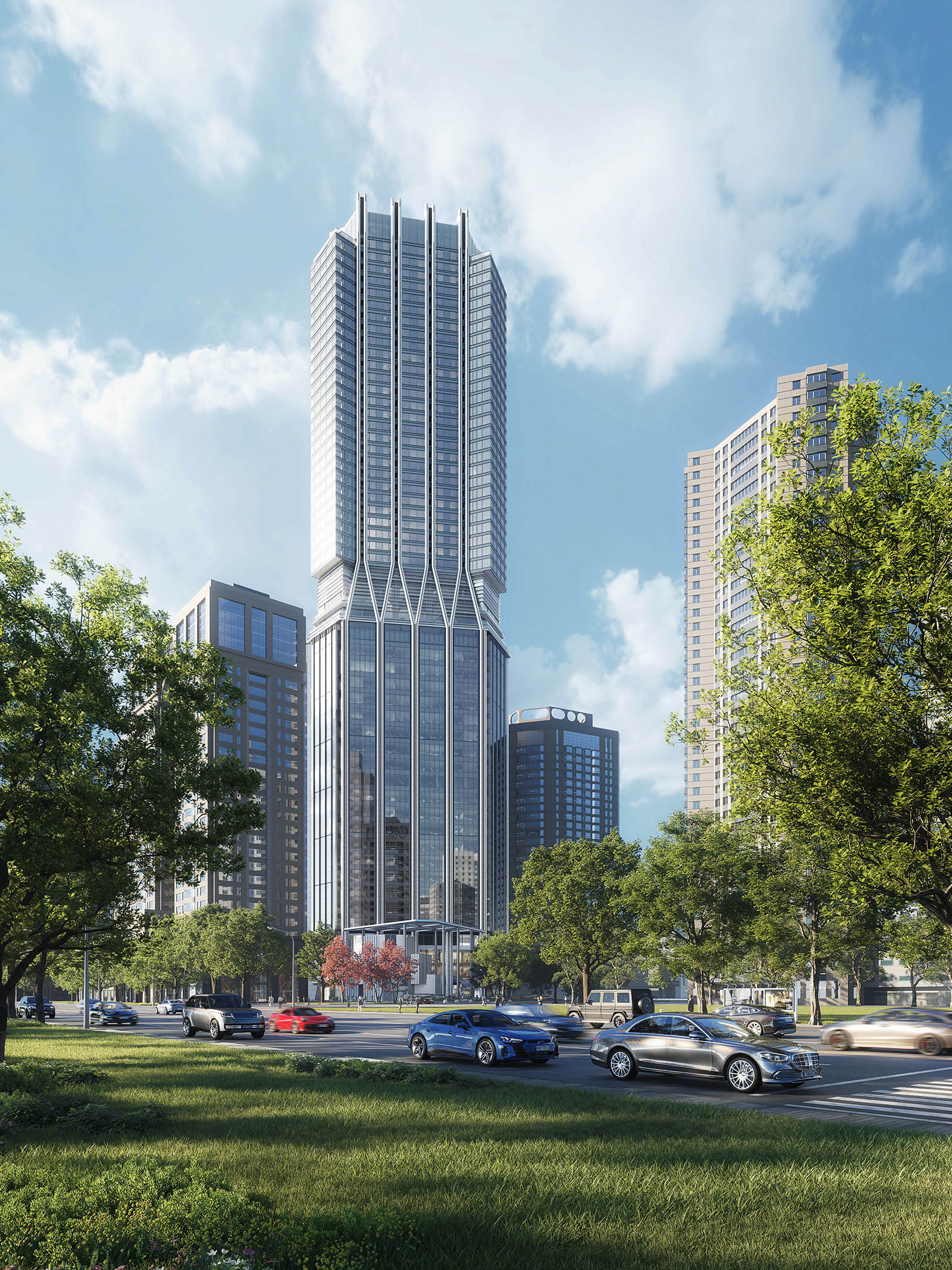
1 Nanjing Road by Norman Foster + Partners. Photomontage by Norman Foster + Partners.
Drop-off zones are carefully positioned at the site’s perimeter, to create a fully pedestrianized public realm that connects the tower with its surroundings and the local waterfront. A permeable plaza, art gallery, and landscaped garden, on the east side of the site, draw in people who are exiting the nearby subway station. At the base of the tower, a human-scale retail podium is inspired by local rock formations and creates a new shopping destination in Qingdao.
The office lobby is located on the second floor of the tower and directly connects with two adjacent retail buildings via external sky bridges. The lobby is surrounded by a series of shaded terraces, which overlook the public realm below. This level of the tower acts as an additional public space for the city and activates the upper levels of the building.
Offices are split into low and high zones, with spectacular views of a nearby park and the sea. All of the office floors have operable windows for natural ventilation and include double-height spaces on the south side of the floorplate, enhancing workplace amenities and future flexibility.
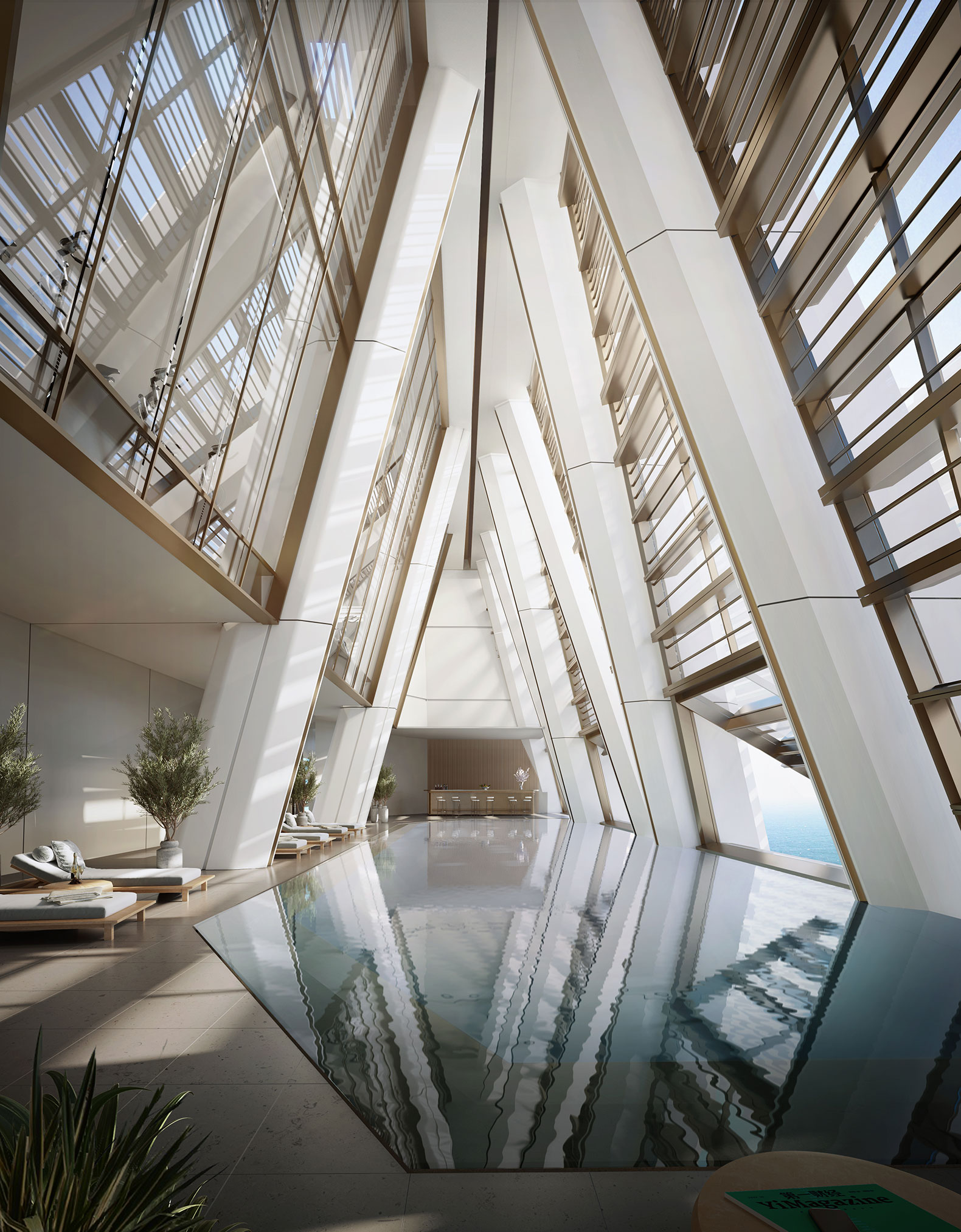
1 Nanjing Road by Norman Foster + Partners. Photomontage by Norman Foster + Partners.
Above the offices, a three-story clubhouse provides a range of exclusive facilities for workers, residents, and club members. The clubhouse includes areas for relaxation and events, a triple-height space with a west-facing infinity pool, private dining rooms, and a bar that offers unparalleled views of the city at night.
The highest levels of the tower contain 105 luxury apartments, with cantilevered terraces and fully glazed corners that offer 15-meter-wide panoramic views out to sea. Every room is naturally ventilated and optimized for energy consumption.
